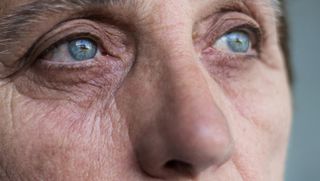Conditions of the cornea
Learn about the different conditions which can affect the cornea.


Keratoconus
A condition where the cornea thins and bulges into a cone shape, leading to distorted vision. Treatment options include glasses, specialised contact lenses, corneal cross-linking (a procedure that uses UV light and riboflavin eye drops to strengthen the cornea), and in severe cases, corneal transplant surgery. Visit this article to learn more about keratoconus.
Pellucid marginal degeneration
A progressive thinning of the lower cornea, causing irregular astigmatism (where vision correction may not be possible with glasses or soft contact lenses) and vision distortion. Specialised contact lenses (such as rigid gas-permeable or scleral lenses) are commonly used, with surgery considered for advanced cases.
Keratoglobus
A rare condition where the entire cornea is thin and develops a globular shape, increasing the risk of rupture from trauma. Management typically involves protective eyewear, and in severe cases, a corneal transplant may be necessary. There are two forms; congenital, which is present at birth, and an acquired form which presents in adults. Vision may not be well corrected with glasses and wearing contact lens may be difficult. Protective eyewear is recommended, and surgery may be an option for some patients.
Fuchs’ dystrophy
A condition where the cornea’s inner layer loses cells, causing swelling, hazy vision, and discomfort. Early stages may be managed with lubricating eye drops, while more advanced cases may require corneal transplant surgery.
Corneal infections (keratitis)
Keratitis is an inflammation of the cornea which can be infectious, or non-infectious. It can be caused by an injury to the eye, including from wearing contact lenses too long, or by bacteria, viruses, fungi or parasites. Treatment depends on the cause but will often include eyedrops and medications. Severe or untreated cases can cause scarring on the cornea and vision loss.
Corneal abrasions
Scratches on the cornea from trauma or foreign objects, which can cause pain, tearing, and light sensitivity. Treated with eyedrops or ointment to prevent infection and for pain relief. A contact lens is sometimes used for comfort and to aid healing.
Corneal ulcers
Open wounds on the cornea, usually due to severe infections. Treatment depends on the cause but usually involves eye drops and medications.
Dry eye syndrome
When the cornea doesn’t receive enough moisture, leading to irritation, blurred vision, and discomfort. Typically treated with lubricating eye drops, lifestyle adjustments, and in some cases prescription medications.
Regular eye exams are essential for early detection and treatment of corneal conditions to help preserve vision. Visit your doctor or eyecare professional for expert care and guidance.
Did you find this article helpful?
Share your thoughts and help us make our resources better for everyone.
Enjoying the content?
Start building your profile to access personalised support, resources, and tools tailored to your eye health journey.
